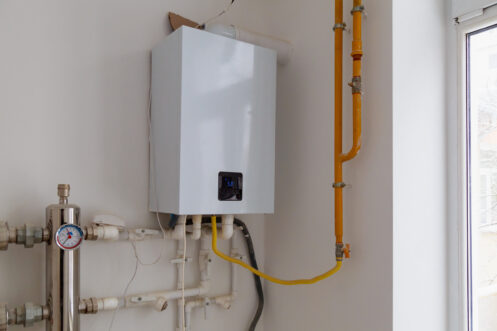Important Tips on Maintaining Your Home's Hot Water SystemSteps to Prolong the Lifespan of Your Home's Hot Water System Through Maintenance
Important Tips on Maintaining Your Home's Hot Water SystemSteps to Prolong the Lifespan of Your Home's Hot Water System Through Maintenance
Blog Article
The article author is making several great pointers regarding How to Maintain a Hot Water Heater in a Few Simple Steps overall in this article on the next paragraphs.

Warm water is vital for everyday convenience, whether it's for a refreshing shower or cleaning dishes. To guarantee your hot water system runs successfully and lasts longer, routine upkeep is key. This post provides functional pointers and insights on just how to keep your home's hot water system to stay clear of disruptions and expensive repair work.
Introduction
Preserving your home's warm water system may appear challenging, yet with a few basic actions, you can ensure it runs smoothly for years ahead. This guide covers every little thing from comprehending your hot water system to do it yourself maintenance pointers and knowing when to hire specialist aid.
Significance of Keeping Your Hot Water System
Routine upkeep not just extends the life expectancy of your warm water system but also guarantees it runs efficiently. Ignoring upkeep can bring about lowered efficiency, higher power costs, and even premature failure of the system.
Signs Your Hot Water System Needs Maintenance
Knowing when your hot water system needs attention can prevent major problems. Watch out for indications such as inconsistent water temperature, unusual noises from the heating unit, or rusty water.
Flushing the Water Heater
Flushing your water heater removes debris build-up, boosting performance and lengthening its life.
Monitoring and Replacing Anode Rods
Anode poles protect against corrosion inside the tank. Inspecting and replacing them when worn out is important.
Complex Issues Requiring Professional Assistance
Examples include major leaks, electrical problems, or if your water heater is regularly underperforming.
Routine Professional Maintenance Benefits
Professional maintenance can consist of thorough inspections, tune-ups, and ensuring conformity with safety and security criteria.
Checking and Changing Temperature Settings
Adjusting the temperature setups makes certain optimum efficiency and security.
DIY Tips for Upkeep
You can execute numerous maintenance tasks yourself to maintain your warm water system in leading condition.
Checking for Leakages
Regularly evaluate pipelines and connections for leaks, as these can lead to water damages and higher costs.
Comprehending Your Hot Water System
Prior to diving into upkeep tasks, it's handy to comprehend the standard components of your warm water system. Usually, this consists of the water heater itself, pipelines, anode rods, and temperature level controls.
Monthly Upkeep Tasks
Routine regular monthly checks can help capture minor issues prior to they intensify.
Testing Stress Relief Valves
Testing the pressure safety valve guarantees it functions appropriately and stops excessive stress accumulation.
Insulating Pipelines
Insulating hot water pipelines reduces warmth loss and can conserve energy.
When to Call a Specialist
While DIY upkeep is useful, some issues call for professional expertise.
Final thought
Regular upkeep of your home's hot water system is necessary for efficiency, durability, and price savings. By following these ideas and knowing when to seek specialist assistance, you can make certain a trustworthy supply of hot water without unforeseen disruptions.
How to Maintain an Instant Hot Water Heater
Before tinkering with your hot water heater, make sure that it’s not powered on. You also have to turn off the main circuit breaker and shut off the main gas line to prevent accidents. Also turn off the water valves connected to your unit to prevent water from flowing into and out of the appliance. 2. When you’re done, you have to detach the purge valves’ caps. These look like the letter “T” and are situated on either side of the water valves. Doing so will release any pressure that has accumulated inside the valves while at the same time avoid hot water from shooting out and burning your skin. 3. When the purge valves’ caps are removed, you have to connect your hosing lines to the valves. Your unit should have come with three hoses but if it didn’t, you can purchase these things from any hardware or home repair shops. You can also get them from retail stores that sell water heating systems. Read the user’s manual and follow it to complete this task properly. When the hosing lines are connected, open the purge port’s valves. 4. You should never use harsh chemical cleaners or solutions when cleaning your unit. Make use of white vinegar instead. It should be undiluted and you’ll probably use about 2 gallons. 5. Now flush your water heater. This task should probably take about 40 minutes. We can’t give you specific directions for this because the procedure is carried out depending on the type, model and brand of your heater. With that being said, refer to the user’s manual. 6. When you’re done draining the unit, you have to turn off the purge port valves again. Remove the hosing lines that you earlier installed on each of the water valves. Put the valve caps (purge port) back in their respective places and be very careful so as not to damage the rubber discs that are found inside these caps. 7. Now that everything’s back in place, check your user’s manual again to find out how to reactivate your water heating system. 8. Once it is working, turn one of your hot water faucets on just to let air pass through the heater’s water supply pipes. Leave the tap on until water flows smoothly out of it. https://www.orrplumbing.com/blog/2014/september/how-to-maintain-an-instant-hot-water-heater/

As a keen reader about Tips on Maintaining a Water Heater, I imagined sharing that excerpt was sensible. So long as you liked our blog entry plz do not forget to pass it around. I treasure reading our article about Tips on Maintaining a Water Heater.
Call Today Report this page